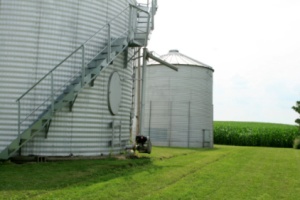 An explosion at an Indiana grain bin Monday afternoon claimed the life of 67-year-old James Swank, news sources report. Police believe Swank was on top of a tower when the blast – which may have been a grain dust explosion -- caused him to fall approximately 175 feet.
An explosion at an Indiana grain bin Monday afternoon claimed the life of 67-year-old James Swank, news sources report. Police believe Swank was on top of a tower when the blast – which may have been a grain dust explosion -- caused him to fall approximately 175 feet.
The incident occurred at the Union Mills Co-op, which is 50 miles southeast of Chicago.
The blast follows two fatal chemical plant explosions in Louisiana less than two weeks ago and the April 17 fertilizer plant blast in West, Texas that killed 15 people.
OSHA is investigating the fatality. Records indicate that the site has never been inspected in response to a complaint or an accident.
Grain dust is highly combustible and can burn or explode if enough becomes airborne or accumulates on a surface and finds an ignition source (such as hot bearing, overheated motor, misaligned conveyor belt, welding, cutting, and brazing). OSHA standards require that both grain dust and ignition sources must be controlled in grain elevators to prevent these often deadly explosions.
Grain dust explosions are often severe, involving loss of life and substantial property damage. Over the last 35 years, there have been over 500 explosions in grain handling facilities across the United States, which have killed more than 180 people and injured more than 675.



